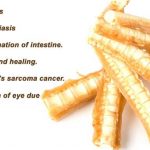
Contents
- 1 What Are the First Signs of a Bad Gallbladder?
- 1.0.1 What is a bad gallbladder?
- 1.0.2 Causes of a bad gallbladder
- 1.0.3 When to see the doctor for a bad gallbladder
- 1.0.4 Diagnosing a bad gallbladder
- 1.0.5 Treatments for a bad gallbladder
- 1.0.6 What is the survival rate of gallbladder cancer?
- 1.0.7 What are the causes and risk factors of gallbladder cancer?
- 1.0.8 What are the signs and symptoms of gallbladder cancer?
- 1.0.9 From
What Are the First Signs of a Bad Gallbladder?
Pain is usually the first sign of a bad gallbladder. However, there are other symptoms you can look for. The following are signs of a bad gallbladder:
Pain
The most common symptom of gallbladder disease is intermittent pain in your upper right abdomen near your rib cage. This pain can be steady or gnawing. It can become severe and radiate to your upper back. This specific type of pain is also called biliary colic pain. It will typically occur after a meal and can last for several hours before going away.
Nausea or vomiting
You may experience pain in your upper right abdomen that is severe and accompanied by nausea or vomiting. This is a sign of many gallbladder problems.
Chronic diarrhea
Chronic gallbladder disease involves gallstones and scarring of the gallbladder. This buildup of stones and scar tissue worsens gas and nausea and can cause chronic diarrhea after meals.
Jaundice
If you have gallbladder stones that are stuck in your common bile duct, you may get jaundice (yellowing of your skin).
What is a bad gallbladder?
The first sign of a bad gallbladder is pain in your upper right abdomen, where your gallbladder is located. The most common gallbladder problem is gallstones. The gallbladder is a small pear-shaped organ underneath your liver that stores bile, a digestive fluid that breaks down fat. The gallbladder plays an important part in a healthy digestive system. However, when problems occur that can’t be easily resolved, your gallbladder can be removed through surgery.
Another problem that can occur in your gallbladder is gallbladder sludge. This is a collection of cholesterol, calcium, bilirubin, and other compounds that build up and block your bile duct. This condition can be painful and may require surgery.
Causes of a bad gallbladder
Gallbladder disease is any disease that impacts your gallbladder. The following conditions may cause a bad gallbladder:
Gallbladder inflammation
This condition is called cholecystitis, and it can be acute or chronic. Inflammation in the gallbladder can damage the organ and make it stop working correctly.
Gallstones
Gallstones are small, hard deposits that form in your gallbladder and cause problems like inflammation, infection, and pain. Sometimes they can go undetected for years. They are usually very small and can grow to several centimeters.
Bile duct stones
This condition is also known as choledocholithiasis, and it happens when you have gallstones in your common bile duct. The stones can either form in your gallbladder and travel to your common bile duct or form in the common bile duct itself. Stones that form in the common bile duct are more dangerous and can lead to infection.
Perforated gallbladder
If your gallstones go untreated, they can perforate your gallbladder. This condition is life-threatening, and if the tear isn’t detected, an infection can spread throughout your abdomen.
Gallbladder cancer
This is a rare form of cancer, but if it goes undetected it can quickly spread to other parts of your body.
When to see the doctor for a bad gallbladder
Gallbladder problems are rarely deadly, but once you’ve had a gallbladder problem you’re more likely to experience another one. Symptoms of a bad gallbladder that require medical attention include:
- Abdominal pain that lasts five hours or more
- Jaundice
- Pale stool
- Sweating and low-grade fever (a fever between 98.8 and 100.3 degrees Fahrenheit)
Diagnosing a bad gallbladder
When you see a doctor for gallbladder problems, they will first run blood tests to determine if there’s inflammation or infection in your bile ducts, gallbladder, pancreas, or liver. They may then run imaging tests to see your gallbladder, including an ultrasound or a computed tomography (CT) scan. For further diagnosis, your doctor may order a magnetic resonance imaging (MRI) to see inside your bile ducts.
Treatments for a bad gallbladder
If your gallbladder pain is mild, you can try to alleviate your symptoms at home. However, if you feel the need to visit your doctor, they will first diagnose your gallbladder problem before creating a treatment plan. Some treatments include:
Over-the-counter (OTC) pain medication
Your doctor may recommend trying over-the-counter pain medication first, such as ibuprofen, to help alleviate pain from a gallstone or other problem.
Prescription pain medication
Depending on the severity of your gallbladder problems, your doctor may prescribe a prescription medication like hydrocodone or morphine.
Surgery
If your gallstones are too large to pass out of your body on their own, your doctor may perform surgery to remove them. In some cases, lithotripsy, the process of using shock-waves to break up gallstones and other masses, can be used. If your gallbladder is rigid or tough from scar tissue, your doctor may have to remove it.
What is the survival rate of gallbladder cancer?
Gallbladder cancer is the uncontrolled growth of cells that starts in the gallbladder. The gallbladder is a small, hollow, pear-shaped organ that sits under the right lobe of the liver. Its function is to store and concentrate the digestive fluid called bile. Gallbladder cancer is rare and affects more women than men. Almost 75% of gallbladder cancer cases and deaths occur in women.
The survival rate of gallbladder cancer primarily depends on the stage of cancer. Thus, the earlier the cancer is diagnosed and treated, the higher the survival rates. Unfortunately, gallbladder cancers are often diagnosed late leading to poor outcomes. The reasons for late diagnosis are many including the fact that the gallbladder is a tiny organ hiding under the liver, which may hide cancer for a longer time.
- Studies show that around 43% of gallbladder cancers were detected after cancer spread to nearby organs or lymph nodes.
- Furthermore, around 42% of gallbladder cancers were found after cancer had already spread to distant organs or lymph nodes.
The survival rate for cancers is often expressed as a five-year relative survival rate. Thus, for a specific stage of gallbladder cancer, if the five-year relative survival rate is 50%, it means that people who have gallbladder cancer are, on average, about 50% as likely as people without the disease to live for at least five years after being diagnosed.
According to the American Cancer Society, the five-year relative survival rates for various stages of gallbladder cancer between 2011 and 2017 are:
| 66% |
| 28% |
| 2% |
| 19% |
*SEER = Surveillance, Epidemiology, and End Results
Understanding the numbers:
- These numbers apply only to the stage of cancer when it is first diagnosed.
- These numbers don’t take everything into account.
- People now being diagnosed with gallbladder cancer may have a better outlook than these numbers show.
The survival rate may also depend on the patient’s general health or the presence of certain health conditions such as high blood pressure, heart diseases, or diabetes. The response to therapy may also vary in different patients, thus affecting the survival rates.
By clicking Submit, I agree to the MedicineNet’s Terms & Conditions & Privacy Policy and understand that I may opt out of MedicineNet’s subscriptions at any time.
What are the causes and risk factors of gallbladder cancer?
The exact cause of gallbladder cancer is not known. The cancer results when the cells of the bladder undergo a change in their genetic material (mutation). This causes the abnormal cells to grow and divide uncontrollably, causing gallbladder cancer. Gallbladder cancer generally begins in the inner layers of the organ and then grows to spread to the surrounding tissue, eventually spreading to the liver and other nearby as well as distant organs. Certain conditions may increase the risk of gallbladder cancer. These include:
- Having a personal or family history of gallstones
- Female gender
- Older age
- Certain ethnic groups such as American Indian, Alaska Natives, or Black ethnicity
- Obese individuals
- A diet rich in fatty or processed foods
- Certain health conditions such as gallbladder polyps, primary sclerosing cholangitis, and gallbladder infections or inflammation
- Smoking
- Exposure to certain workplace chemicals such as chemicals used in textile and rubber industries
What are the signs and symptoms of gallbladder cancer?
Gallbladder cancer may not show any signs in its initial stages. Symptoms generally include:
- Pain in abdomen
- Jaundice (yellowish discoloration of the skin and the white of the eyes)
- Nausea and vomiting
- Pale stools
- Lumps or swelling in the belly
- Dry, itchy skin
- Unintended loss of weight
- Poor appetite
- Dark yellow urine
- Fever
From
Digestive Disorders Resources
- 7 Best Vitamins for Crohn’s Disease
- Side Effects From aHUS Treatment


